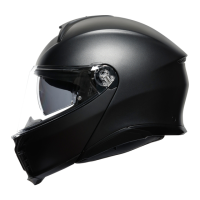14 15
9 PINLOCK
®
120
ANTI-FOG LENS
A hydrophilic plastic device with anti-fog features capable of absorbing humidity.
By fitting precisely into the specially shaped seat on the inner surface of the visor,
it creates an air pocket that limits the onset of fogging without compromising the
field of view.
Anti-fog devices delay the formation of condensation, but do not guarantee that the
problem will not occur. Such devices delay the onset of the problem. Therefore, under
extreme environmental conditions, fogging of the visor may occur.
It is strongly recommended the use of Pinlock
®
lens with air temperatures below 20°C
and/or humidity levels above 70% and/or in the rain.
The Pinlock
®
lens should be handled with care and without the use of tools that could
scratch it or abrade its surface.
9.2 REMOVAL
Prerequisite: remove the visor from the helmet (see 5.3).
• Stretch the visor slightly by grasping it at the ends.
• Lift the lens
1
by acting on its lower central part, then release it from the eccentric pawls
2
on the visor; first on one side, then on the other.
› The lens is now detached. Remove it.
The Pinlock
®
lens should be handled with care and without the use of tools that could
scratch it or abrade its surface.
9.3 TENSIONING
See the illustrative document included in the Pinlock
®
lens packaging.
1
2
3
9.1 INSTALLATION
Prerequisite: the visor is removed from the helmet (see
5.3) and has been thoroughly cleaned. The lens is rest-
ing on the inner surface of the visor, facing so that the
silicone gasket is in contact with the visor.
• Stretch the visor slightly by grasping it at
the ends.
• Attach the lens
1
to the eccentric pawls
2
of the visor; first on one side, then on
the other.
• Ensure that the silicone gasket
3
of the
lens adheres perfectly to the visor along its
entire length.
› Remove the protective film from the lens and
install the visor on the helmet (see 5.4).

